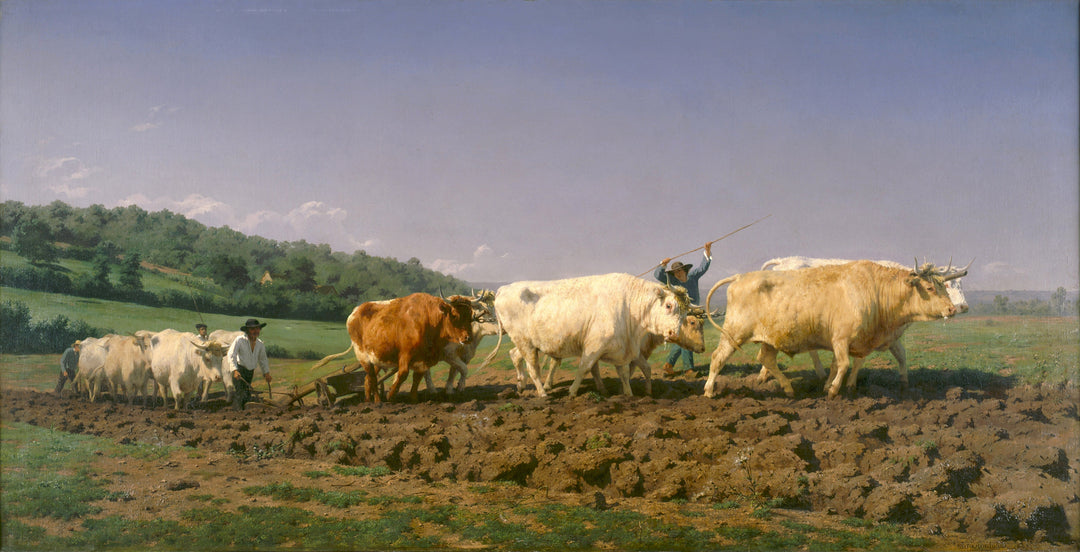
Plowing in the Nivernais - Rosa Bonheur
| Author: | Rosa Bonheur |
|---|---|
| Title: | Plowing in the Nivernais |
| Original location: | Musée d'Orsay, Paris, France |
| Year: | 1849 |
In this 1849 composition, Rosa Bonheur elevates agricultural labor to a scene of monumental grandeur, granting oxen and peasants a prominence worthy of classical heroes. The painting captures the collective effort of plowing with almost scientific precision, where every muscle of the animals and every furrow in the earth seem tangible. Her realism is no accident: Bonheur immersed herself in farm life to study the behavior of draft animals, deeply engaged in direct observation, striving to capture on canvas the beauty of life as it truly is.
This painting not only belongs to realism, but also acts as a bridge between late romanticism and nineteenth-century naturalist painting. While romanticism had exalted nature as a sublime and spiritual force, Bonheur presents the land not as an idyllic landscape, but as a stage for hard work and perseverance. Through her earthy palette and balanced composition, the work moves away from the world of feelings and plunges into the objective representation of rural life.
The influence of "Plowing in the Nivernais" extends beyond French art, impacting rural painting by artists like Jean-François Millet, who would address similar themes from a more symbolic and melancholic perspective. While Millet emphasized the spirituality of peasants, Bonheur dignified their labor with almost photographic precision. Her approach influenced portrayals of peasant life in Russian realism, especially among artists like Ilya Repin, who depicted the worker’s effort as the foundation of society.